Another name for mad cow disease. Bovine Spongiform Encephalopathy (BSE): Understanding Mad Cow Disease and Its Impact
What is Bovine Spongiform Encephalopathy. How does BSE affect cows. Can humans contract BSE. What measures are in place to prevent BSE transmission. How is BSE diagnosed in cattle. What are the symptoms of BSE in cows. What is the connection between BSE and variant Creutzfeldt-Jakob disease.
The Nature of Bovine Spongiform Encephalopathy (BSE)
Bovine Spongiform Encephalopathy, commonly known as BSE or mad cow disease, is a progressive neurological disorder affecting cattle. The term “bovine” refers to cows, “spongiform” describes the sponge-like appearance of affected brain tissue, and “encephalopathy” indicates a disease of the brain. BSE is a fatal condition that deteriorates the central nervous system of infected cattle over time.
The Causative Agent: Prions
What causes BSE in cattle? The primary culprit behind BSE is believed to be a misfolded protein called a prion. Under normal circumstances, prion proteins play a role in cellular functions. However, in BSE, these proteins undergo an abnormal change in their structure, becoming harmful to the animal’s nervous system. The transformed prions accumulate in the brain, leading to the characteristic spongiform appearance and neurological symptoms.
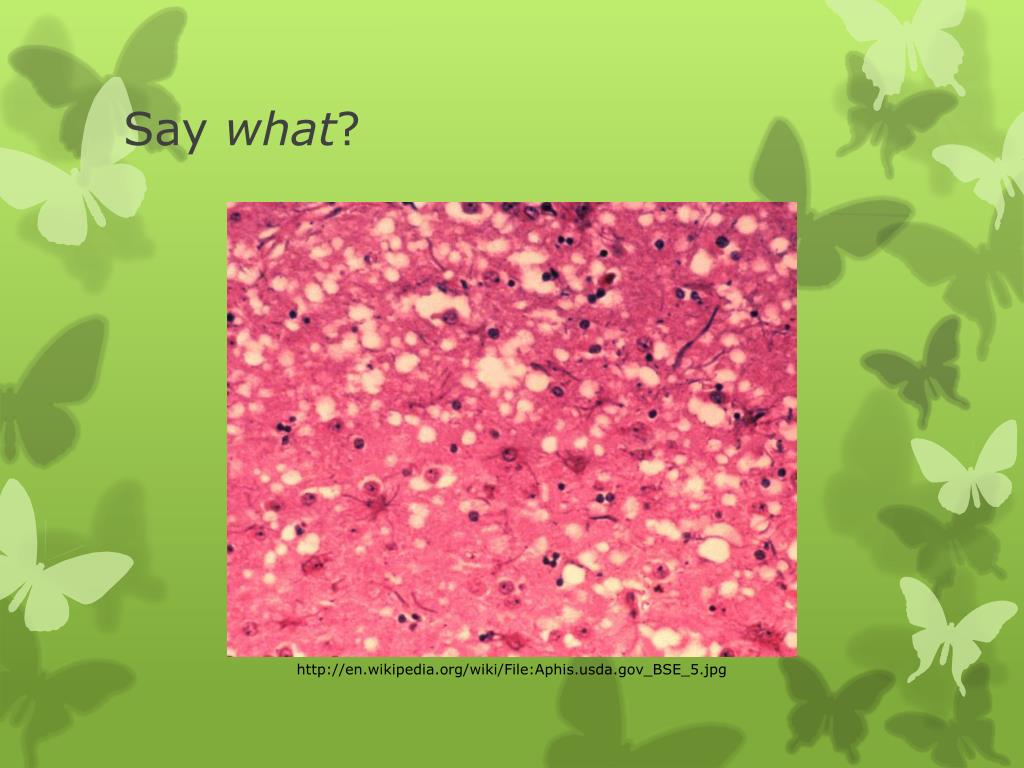
The Incubation Period and Disease Progression
How long does it take for BSE symptoms to appear in infected cows? The incubation period for BSE is typically four to six years. During this time, infected cattle show no visible signs of the disease, making early detection challenging. Once symptoms manifest, the disease progresses rapidly, usually resulting in death within two weeks to six months.
Clinical Signs and Diagnosis of BSE in Cattle
Recognizing the symptoms of BSE in cattle is crucial for early intervention and containment. The most common sign is incoordination, where affected cows struggle with walking and rising from a lying position. Other symptoms may include:
- Nervous or aggressive behavior
- Heightened sensitivity to touch and sound
- Weight loss despite normal appetite
- Decreased milk production in dairy cows
Diagnostic Challenges and Post-Mortem Confirmation
Is there a reliable test for BSE in live cattle? Unfortunately, there is currently no definitive test to diagnose BSE in living animals. Confirmation of the disease typically occurs post-mortem through microscopic examination of brain tissue. Scientists look for the characteristic spongy appearance and can also use specialized test kits to detect the presence of abnormal prions in brain samples.
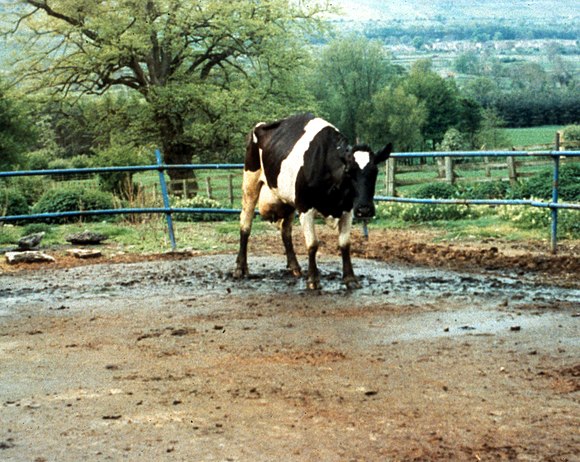
Transmission and Spread of BSE
Understanding how BSE spreads is essential for implementing effective prevention strategies. The primary mode of transmission is through contaminated feed containing infected animal proteins.
The Feed Factor: How Cows Contract BSE
How do cattle become infected with BSE? Cows typically contract BSE by consuming feed contaminated with the abnormal prion protein. This contamination often occurs when feed includes rendered products from BSE-infected cattle. The practice of using cattle byproducts in animal feed was once common but has since been heavily regulated in many countries to prevent the spread of BSE.
Age of Susceptibility and Infection Timing
When are cattle most vulnerable to BSE infection? Research suggests that cattle are most susceptible to BSE infection during their first year of life. However, due to the long incubation period, symptoms typically don’t appear until the animal is five years old or older. This delay between infection and symptom onset presents significant challenges for disease control and surveillance.

The Human Connection: Variant Creutzfeldt-Jakob Disease (vCJD)
The emergence of BSE raised concerns about potential transmission to humans, leading to the identification of variant Creutzfeldt-Jakob Disease (vCJD).
From Cattle to Humans: The vCJD Link
Can humans contract a form of BSE? Yes, humans can develop a condition called variant Creutzfeldt-Jakob Disease (vCJD), which is believed to be linked to consumption of BSE-contaminated beef products. As of 2019, 232 cases of vCJD have been reported worldwide, with the majority occurring in the United Kingdom.
Transmission Routes and Risk Factors
How is vCJD transmitted to humans? The primary route of vCJD transmission to humans is thought to be through consumption of beef products contaminated with BSE prions. It’s important to note that neither BSE nor vCJD is contagious in the traditional sense – they cannot be spread through casual contact or airborne transmission. Studies have also shown that milk and dairy products from BSE-infected cows do not pose a risk for vCJD transmission.

Global Impact and Control Measures
The BSE crisis had far-reaching consequences for the global beef industry and led to significant changes in agricultural practices and food safety regulations.
Economic Repercussions and Trade Restrictions
How did the BSE outbreak affect the global beef industry? The discovery of BSE cases in various countries led to widespread bans on beef imports and exports, causing substantial economic losses for affected nations. The crisis also resulted in a temporary decrease in beef consumption in many regions due to consumer fears.
Regulatory Response and Prevention Strategies
What measures have been implemented to prevent BSE transmission? Governments and regulatory bodies worldwide have taken extensive steps to prevent the spread of BSE and protect human health. These measures include:
- Banning the use of ruminant-derived proteins in cattle feed
- Implementing rigorous surveillance and testing programs for cattle
- Removing specified risk materials (SRMs) from the food chain
- Enhancing traceability systems for livestock and beef products
- Strengthening regulations on slaughter practices and meat processing
FDA’s Role in Ensuring Food Safety
The U.S. Food and Drug Administration (FDA) plays a crucial role in safeguarding the American food supply from BSE-related risks.

Feed Regulations and Restrictions
What steps has the FDA taken to prevent BSE in the United States? Since August 1997, the FDA has prohibited the use of most mammalian proteins in feed for ruminant animals. This “feed ban” aims to break the cycle of BSE transmission by preventing contaminated animal products from entering the cattle food supply.
Enhanced Protections and Risk Mitigation
How has the FDA further strengthened BSE prevention measures? In April 2009, the FDA implemented additional safeguards by prohibiting the use of high-risk cow parts in all animal feed, including pet food. These high-risk materials include brains and spinal cords from cattle 30 months of age or older, which have the highest likelihood of harboring BSE prions if the animal is infected.
The Future of BSE Research and Surveillance
While significant progress has been made in understanding and controlling BSE, ongoing research and vigilance remain essential.
Emerging Diagnostic Technologies
Are there new methods being developed to detect BSE in live cattle? Scientists are continually working on developing more sensitive and reliable tests for BSE detection in living animals. Promising areas of research include:
- Blood-based biomarker tests
- Advanced neuroimaging techniques
- Nasal swab assays for prion detection
These potential diagnostic tools could revolutionize BSE surveillance and control efforts if successfully developed and implemented.
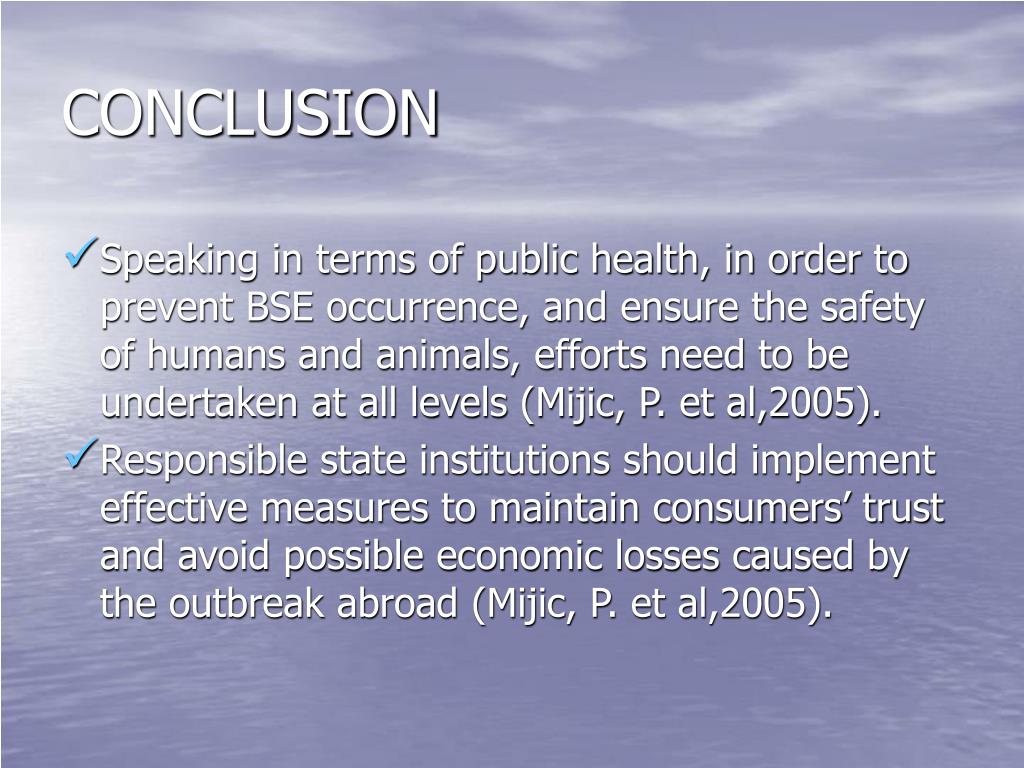
Genetic Resistance and Selective Breeding
Can cattle be bred for BSE resistance? Research into the genetic factors influencing BSE susceptibility has identified certain variations in the prion protein gene that may confer increased resistance to the disease. This knowledge opens up possibilities for selective breeding programs aimed at developing cattle populations with enhanced natural protection against BSE.
As our understanding of BSE continues to evolve, so too will our strategies for prevention, detection, and control. The global response to the BSE crisis serves as a testament to the importance of collaborative scientific research, robust regulatory frameworks, and proactive risk management in safeguarding both animal and human health.
All About BSE (Mad Cow Disease)
Español
The word BSE is short but it stands for a disease with a long name, bovine spongiform encephalopathy. “Bovine” means that the disease affects cows, “spongiform” refers to the way the brain from a sick cow looks spongy under a microscope, and “encephalopathy” indicates that it is a disease of the brain. BSE is commonly called “mad cow disease.”
What is BSE?
BSE is a progressive neurologic disease of cows. Progressive means that it gets worse over time. Neurologic means that it damages a cow’s central nervous system (brain and spinal cord).
What Causes BSE?
Most scientists think that BSE is caused by a protein called a prion. For reasons that are not completely understood, the normal prion protein changes into an abnormal prion protein that is harmful. The body of a sick cow does not even know the abnormal prion is there. Without knowing it is there, the cow’s body cannot fight off the disease.
What are the Signs of BSE in Cows?
A common sign of BSE in cows is incoordination. A sick cow has trouble walking and getting up. A sick cow may also act very nervous or violent, which is why BSE is often called “mad cow disease.”
It usually takes four to six years from the time a cow is infected with the abnormal prion to when it first shows symptoms of BSE. This is called the incubation period. During the incubation period, there is no way to tell that a cow has BSE by looking at it. Once a cow starts to show symptoms, it gets sicker and sicker until it dies, usually within two weeks to six months. There is no treatment for BSE and no vaccine to prevent it.
Currently, there is no reliable way to test for BSE in a live cow. After a cow dies, scientists can tell if it had BSE by looking at its brain tissue under a microscope and seeing the spongy appearance. Scientists can also tell if a cow had BSE by using test kits that can detect the abnormal prion in the brain.
Brain from a healthy cow, as seen under a microscope using special stains.
Photo courtesy of Dr. Katie Kelly, Johns Hopkins University
Brain from a cow sick with BSE, as seen under a microscope using special stains. The large white spaces are like the “holes” of a sponge.
Photo courtesy of the late Dr. Al Jenny, USDA
How Does a Cow Get BSE?
The parts of a cow that are not eaten by people are cooked, dried, and ground into a powder. The powder is then used for a variety of purposes, including as an ingredient in animal feed. A cow gets BSE by eating feed contaminated with parts that came from another cow that was sick with BSE. The contaminated feed contains the abnormal prion, and a cow becomes infected with the abnormal prion when it eats the feed. If a cow gets BSE, it most likely ate the contaminated feed during its first year of life. Remember, if a cow becomes infected with the abnormal prion when it is one-year-old, it usually will not show signs of BSE until it is five-years-old or older.
Can People Get BSE?
People can get a version of BSE called variant Creutzfeldt-Jakob disease (vCJD). As of 2019, 232 people worldwide are known to have become sick with vCJD, and unfortunately, they all have died. It is thought that they got the disease from eating food made from cows sick with BSE. Most of the people who have become sick with vCJD lived in the United Kingdom at some point in their lives. Only four lived in the U.S., and most likely, these four people became infected when they were living or traveling overseas.
Neither vCJD nor BSE is contagious. This means that it is not like catching a cold. A person (or a cow) cannot catch it from being near a sick person or cow. Also, research studies have shown that people cannot get BSE from drinking milk or eating dairy products, even if the milk came from a sick cow.
What is the FDA Doing to Keep Your Food Safe?
The U.S. Food and Drug Administration (FDA) is doing many things to keep the food in the U. S. safe for both people and cows. Since August 1997, the FDA has not allowed most parts from cows and certain other animals to be used to make food that is fed to cows. This protects healthy cows from getting BSE by making sure that the food they eat is not contaminated with the abnormal prion.
S. safe for both people and cows. Since August 1997, the FDA has not allowed most parts from cows and certain other animals to be used to make food that is fed to cows. This protects healthy cows from getting BSE by making sure that the food they eat is not contaminated with the abnormal prion.
In April 2009, the FDA took additional steps to make sure the food in the U.S. stays safe. Certain high-risk cow parts are not allowed to be used to make any animal feed, including pet food. This prevents all animal feed from being accidentally contaminated with the abnormal prion. High-risk cow parts are those parts of the cow that have the highest chance of being infected with the abnormal prion, such as the brains and spinal cords from cows that are 30 months of age or older.
By keeping the food that is fed to cows safe, the FDA is protecting people by making sure that the food they eat comes from healthy cows.
The FDA also works with the U.S. Department of Agriculture (USDA) to keep cows in the U.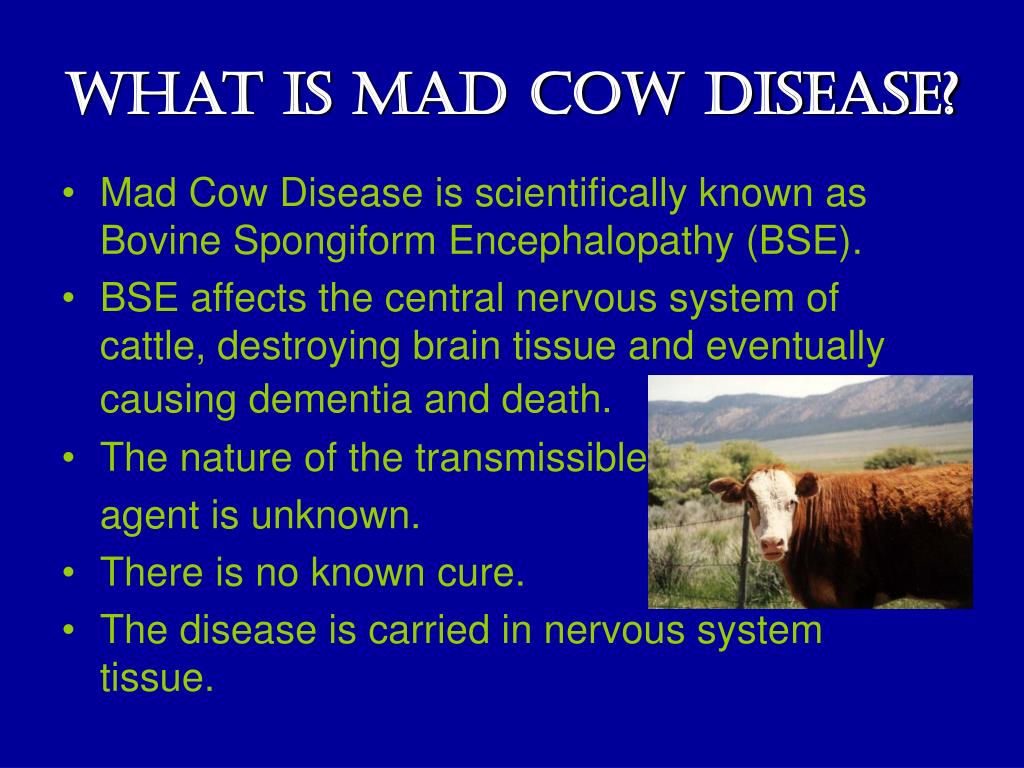 S. healthy and free of BSE. The USDA prevents high-risk cows and cow products from entering the U.S. from other countries. The USDA also makes sure that high-risk cow parts, such as the brains and spinal cords, and cows that are unable to walk or that show other signs of disease are not used to make food for people.
S. healthy and free of BSE. The USDA prevents high-risk cows and cow products from entering the U.S. from other countries. The USDA also makes sure that high-risk cow parts, such as the brains and spinal cords, and cows that are unable to walk or that show other signs of disease are not used to make food for people.
The steps the FDA and USDA have taken to prevent cows in the U.S. from getting BSE are working very well. Only six cows with BSE have been found in the U.S. The first case was reported in 2003 and the most recent case was found in August 2018.
It is worth noting that there are two types of BSE, classical and atypical. Classical is caused by contaminated feed fed to cows. Atypical is rarer and happens spontaneously, usually in cows 8-years-old or older. Of the six U.S. cows found with BSE, five were atypical. The only case of classical BSE in the U.S. was the first one, in 2003, in a cow imported from Canada.
Can Other Animals Get BSE?
Sheep, goats, mink, deer, and elk can get sick with their own versions of BSE. Cats are the only common household pet known to have a version of BSE. It is called feline spongiform encephalopathy, and the same things that are being done to protect people and cows are also protecting cats. No cat in the U.S. has ever been found to have this disease.
Cats are the only common household pet known to have a version of BSE. It is called feline spongiform encephalopathy, and the same things that are being done to protect people and cows are also protecting cats. No cat in the U.S. has ever been found to have this disease.
How Can I Get More Information?
- Contact the FDA’s Center for Veterinary Medicine at 240-402-7002 or [email protected].
- U.S. Department of Agriculture, BSE Frequently Asked Questions
- Centers for Disease Control and Prevention, Variant Creutzfeldt-Jakob Disease (vCJD)
- Centers for Disease Control and Prevention, BSE Cases Identified in the United States
- University of Edinburgh, The National CJD Research & Surveillance Unit (NCJDRSU)
USDA APHIS | Bovine Spongiform Encephalopathy (BSE)
Error:
Javascript is disabled in this browser.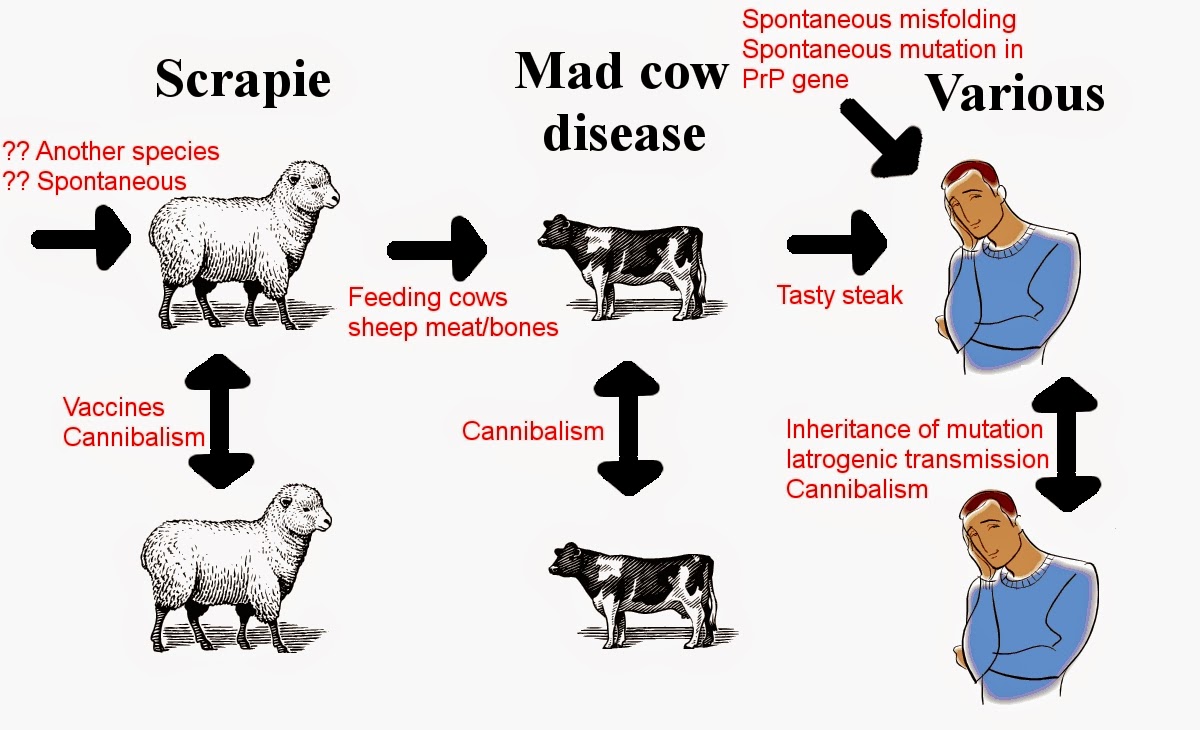 This page requires Javascript. Modify your browser’s settings to allow Javascript to execute. See your browser’s documentation for specific instructions.
This page requires Javascript. Modify your browser’s settings to allow Javascript to execute. See your browser’s documentation for specific instructions.
USDA FAQ’s and resources about coronavirus (COVID-19). LEARN MORE
Animal Health
Animal Disease Information
Cattle
/
/
/
Animal Health
- Animal Disease Home
- Aquaculture
- Avian
- Cattle
- Cervid
- Equine
- Sheep/Goat
- Swine
- Wildlife
Last Modified: Jun 2, 2020
Bovine Spongiform Encephalopathy (BSE), widely referred to as “mad cow disease,” is a progressive and fatal neurologic disease of cattle. It is caused by an unconventional transmissible agent, an abnormal prion protein. BSE belongs to a family of diseases known as transmissible spongiform encephalopathies (TSEs) that includes scrapie in sheep and goats, chronic wasting disease in deer, elk and moose, and in humans, classic and variant Creutzfeldt-Jakob disease (CJD) among other syndromes. The prion agent is resistant to enzymatic breakdown and most disinfection treatments. Clinical signs in cattle include behavioral changes, coordination problems, weight loss and decreased milk production.
The prion agent is resistant to enzymatic breakdown and most disinfection treatments. Clinical signs in cattle include behavioral changes, coordination problems, weight loss and decreased milk production.
BSE, which is not contagious, exists in two forms: classical (C-type) and atypical (L-type or H-type). The incubation period for classical BSE from time of infection, thought to occur early in life, until the onset of clinical signs averages three to six years. The primary source of infection for classical BSE is feed contaminated with the infectious prion agent, such as meat-and-bone meal containing protein derived from rendered infected cattle. Regulations from the Food and Drug Administration (FDA) have prohibited the inclusion of mammalian protein in feed for cattle and other ruminants since 1997 and have also prohibited high risk tissue materials in all animal feed since 2009.
The atypical BSE forms, L-type and H-type, occur spontaneously at very low levels in all cattle populations, particularly in older cattle, usually eight years of age or older, and does not appear to be associated with contaminated feed. Bioassay data support the hypotheses that these strains are biologically distinct from classical BSE. Like classic or sporadic CJD in humans, it seems to arise rarely and spontaneously.
Bioassay data support the hypotheses that these strains are biologically distinct from classical BSE. Like classic or sporadic CJD in humans, it seems to arise rarely and spontaneously.
BSE was first diagnosed in 1986 in the United Kingdom, which has had the vast majority of cases worldwide. However, the disease has been detected in many other countries, including six cases in the United States from 2003 to 2012. Of the six U.S. cases, the first was a case of classical BSE that was imported from Canada; the rest have been atypical BSE.
BSE presents a public health concern because occurrences of variant CJD in humans have been linked to the consumption of food containing ingredients derived from BSE-infected cattle.
The World Organisation for Animal Health (OIE) evaluates countries that submit a request and assigns a risk status for BSE based on the country’s history with the disease, the implementation and enforcement of their feed bans and their BSE surveillance. In 2013, the U. S. status for BSE was upgraded to negligible risk, the highest status available. In 2015, the OIE determined that atypical BSE occurred spontaneously at a low rate in all cattle populations and would be excluded for BSE risk.
S. status for BSE was upgraded to negligible risk, the highest status available. In 2015, the OIE determined that atypical BSE occurred spontaneously at a low rate in all cattle populations and would be excluded for BSE risk.
Signs and Symptoms of BSE
Cattle affected by BSE experience progressive degeneration of the nervous system. Affected animals may display changes in temperament (nervousness or aggression), abnormal posture, incoordination and difficulty in rising, decreased milk production, or loss of condition without noticeable loss of appetite. There is no treatment or vaccine to prevent BSE. Following the onset of clinical signs, the animal’s condition deteriorates until it either dies or is destroyed. This process usually takes from two weeks to six months.
Transmission of BSE
BSE is not a contagious disease and therefore is not spread through casual contact between cattle or with other species. The primary route of spread of classical BSE infection in cattle is feed contaminated with the infectious agent. Scientific evidence shows that feed contamination results from incorporating ingredients (for example, meat-and-bone meal) that contain protein derived from rendered infected cattle. Standard rendering processes do not completely inactivate the BSE agent. Therefore, rendered protein such as meat-and- bone meal derived from infected animals may contain the infectious agent. The preferred method for disposal of BSE-infected carcasses is alkaline digestion or complete, high- temperature incineration. Under no circumstances should BSE suspects be used for human or animal consumption.
Scientific evidence shows that feed contamination results from incorporating ingredients (for example, meat-and-bone meal) that contain protein derived from rendered infected cattle. Standard rendering processes do not completely inactivate the BSE agent. Therefore, rendered protein such as meat-and- bone meal derived from infected animals may contain the infectious agent. The preferred method for disposal of BSE-infected carcasses is alkaline digestion or complete, high- temperature incineration. Under no circumstances should BSE suspects be used for human or animal consumption.
Eradication and Control Efforts
Agricultural officials around the world have taken actions to eradicate or control the disease. These entail prohibiting the inclusion of mammalian meat-and-bone meal in animal feed; prohibiting the use of specified risk materials or SRMs (those tissues, e.g., brain and spinal cord, known to have the highest infectivity) in food, feed, or other products; and destroying animals showing signs of BSE and other animals at high risk of developing the disease. As a result of these actions, most notably the imposition of feed bans, the rate of newly reported cases of BSE around the world has decreased to less than 10 cases annually.
As a result of these actions, most notably the imposition of feed bans, the rate of newly reported cases of BSE around the world has decreased to less than 10 cases annually.
In 1997, the U.S. Food and Drug Administration (FDA) implemented regulations that prohibit the feeding of most mammalian proteins to ruminants, including cattle. This feed ban is the most important measure to prevent the transmission of disease to cattle. In 2008, the ban was strengthened by prohibiting the inclusion of SRMs (brains and spinal cords from animals 30 months of age or older) in any animal feed. The 2008 rule also prohibits the use of all cattle carcasses not inspected and passed for human consumption, unless the cattle are less than 30 months of age, or the brains and spinal cords have been removed.
Identifying Infected Animals
An ongoing, comprehensive interagency surveillance program for BSE has been in place in the U.S. since 1990. The program targets cattle populations with the highest probability of BSE detection, including animals with neurological symptoms consistent with BSE and cattle 30 months of age or older are that are non-ambulatory, recumbent, or unable to rise or walk without assistance. Because BSE, including atypical BSE, is exceedingly uncommon among U.S. cattle, the chosen targeted population will create intentional bias in the sample frame, which favors detection of disease. APHIS also supports the FDA’s regulation prohibiting the use of most mammalian proteins in ruminant feed.
Because BSE, including atypical BSE, is exceedingly uncommon among U.S. cattle, the chosen targeted population will create intentional bias in the sample frame, which favors detection of disease. APHIS also supports the FDA’s regulation prohibiting the use of most mammalian proteins in ruminant feed.
Because of the clinical history that can be obtained, samples collected on the farm from cattle exhibiting symptoms of central nervous system disease are particularly valuable to the BSE Ongoing Surveillance Program efforts in the U.S. Accredited veterinarians with proper training can play a key role in the sampling of these animals and should contact their VS field office for more information. BSE is a reportable disease. Any suspicious cases should be reported to the APHIS – VS Area Office or the State animal health official as a suspected foreign animal disease (FAD).
Risks
The agent responsible for BSE has not been completely characterized. There are a variety of theories regarding the nature of the agent. The most widely accepted is that disease is caused by an abnormal prion protein that accumulates in the central nervous system and causes the normal cellular version of the protein to change shape such that it can no longer be degraded by the cell, causing the protein to accumulate and damage the cell.
The most widely accepted is that disease is caused by an abnormal prion protein that accumulates in the central nervous system and causes the normal cellular version of the protein to change shape such that it can no longer be degraded by the cell, causing the protein to accumulate and damage the cell.
The BSE agent is extremely resistant to heat and to normal sterilization processes. It also does not evoke any detectable immune response or inflammatory reaction in host animals. In cattle naturally infected with BSE, evidence of disease has been found only in brain tissue, in the spinal cord, and in the retina. In experimentally infected cattle, the distal ileum, bone marrow, dorsal root ganglion, and trigeminal ganglion from experimentally infected cattle were also found to be infective.
Regulatory Information
In March 1996, the United Kingdom’s Spongiform Encephalopathy Advisory Committee (SEAC) announced the identification of 10 cases of variant Creutzfeldt-Jakob disease (vCJD) in people. These cases had a characteristic clinical and pathological phenotype that differed from other routinely diagnosed cases of classic (sporadic) CJD. SEAC concluded, and scientific evidence later confirmed, that these cases were linked to exposure to classical BSE before SRM bans were implemented. It is not known whether atypical forms of BSE (L- or H-type) are causally linked to forms of human prion diseases.
These cases had a characteristic clinical and pathological phenotype that differed from other routinely diagnosed cases of classic (sporadic) CJD. SEAC concluded, and scientific evidence later confirmed, that these cases were linked to exposure to classical BSE before SRM bans were implemented. It is not known whether atypical forms of BSE (L- or H-type) are causally linked to forms of human prion diseases.
In the U.S., public or human health protective measures are maintained by both the Food Safety and Inspection Service (FSIS) and the FDA. The most important public health protective measure is the removal of SRMs from the human food supply. Other controls include banning non-ambulatory disabled cattle from the human food chain; prohibiting air-injection stunning of slaughter cattle; requiring additional process controls in advanced meat-recovery systems; and forbidding the use of mechanically separated meat in human food. Additionally, protection from BSE and other disease is achieved through antemortem inspection of slaughter cattle and the exclusion from slaughter of animals with any clinical signs of neurological disease or other abnormalities.
The U.S. also maintains import regulations, consistent with the OIE guidelines for BSE, to prevent BSE from entering the US through imports. Beginning in 1989, APHIS prohibited the importation of ruminants and most ruminant products from countries that had identified BSE in native cattle or that were at risk for BSE. As more research was done to help define the disease, this research also provided scientific justification to outline ways to safely trade commodities to minimize the risk of disease. This is reflected in the OIE guidelines for safe trade. APHIS current import regulations are consistent with these guidelines and allow safe trade in many bovine commodities, including meat.
History
BSE was first diagnosed in the mid-1980s in Great Britain. BSE incidents have declined worldwide as countries have established control measures, such as feed bans. The highest number of cases was reported in 1992, with more than 37,300, and there has been a continued reduction in detections of this disease annually since then, with fewer than 10 cases annually worldwide over the past 3 years.
Six cases of BSE have been identified in the U.S. The first case was detected in 2003 in Washington State in a 6 year-old dairy cow imported from Canada and confirmed as classical BSE. The subsequent five cases were confirmed as atypical BSE forms. The second, in 2005, was a 12 year-old beef cow in Texas. The third, in 2006, was a 10 year-old beef cow in Alabama. The fourth, in 2012, was a 10 year-old dairy cow in California. The fifth case, in 2017, was an 11 year-old beef cow in Alabama. The sixth case, in 2018, was a 6 year old mixed breed beef cow in Florida.
Resources
- Bovine Spongiform Encephalopathy (BSE): Ongoing Surveillance Program
- Food
and Drug Administration: Bovine
Spongiform Encephalopathy - May 29, 2013 Statement from Agriculture Secretary Tom
Vilsack Regarding World Organization for Animal Health (OIE) Upgrade of United
States’ BSE Risk Status - California BSE Investigation-Final Epidemiology Report,
July 2012 - Alabama BSE Investigation-Final Epidemiology Report, May
2006 - USDA Texas BSE Investigation-Final Epidemiology Report,
August 2005 - Washington State Investigation-Final Epidemiology Report,
March 2004 - BSE Fact Sheet
- USDA Food Safety and Inspection Service: BSE Resources
- Centers for Disease Control and Prevention: Bovine Spongiform Encephalopathy (BSE), or
Mad Cow Disease - USDA Economic Research Service: An Economic Chronology of Bovine Spongiform
Encephalopathy in North America - Canadian Food Inspection Agency: BSE Enhanced Surveillance Program
- World Organisation for Animal Health, OIE: BSE
- The Transmissible Spongiform Encephalopathies of Livestock
Complementary Content
“Mad cow disease” is gaining momentum – RBC
adv. rbc.ru
rbc.ru
adv.rbc.ru
adv.rbc.ru
Hide banners
What is your location ?
YesChoose other
Categories
Euro exchange rate on July 14
EUR CB: 100.68
(+0.79)
Investments, 13 Jul, 17:25
Dollar exchange rate on July 14
USD Central Bank: 90.18
(-0.45)
Investments, 13 Jul, 17:25
5 “squares” without a bathroom: what is the difference between apartments in China and Russian
Real estate, 15:21
Scholz calculated Germany’s spending on military assistance to Ukraine until 2027
Politics, 15:14
In a team with people: which IT specialists can already be replaced by neural networks
Pro, 15:14
adv. rbc.ru
rbc.ru
adv.rbc.ru
A traffic jam of 500 cars formed near the Crimean bridge
Society, 15:12
Russian Olympic volleyball champion admits doping
Sports, 15:12
How to grow a popular media about nightlife from a group
RBC and VKontakte, 15:11
The ruble is falling, oil is growing: which companies in Russia benefit from this
Pro, 15:07
Do you see a competitor in ChatGPT?
Learn how to turn a neural network into an assistant in the new intensive RBC Pro
Buy intensive
Chernogolovka closed the deal to buy Pringles chips manufacturer
Business, 15:06
Extraction of innovations: how the R&D structures of metallurgical companies work
Trends, 14:57
Poland announced the closing date of the consular agency in Smolensk
Politics, 14:55
Indonesia to launch national crypto exchange in July
Crypto, 14:46
South African authorities announced Russia’s refusal to replace Putin with Lavrov at the summit
Politics, 14:43
The Kremlin evaluated the work of air defense after a drone attack near the Kursk nuclear power plant
Politics, 14:40
An 11-year-old girl who disappeared in the mountains of Adygea was found alive
Society, 14:39
adv. rbc.ru
rbc.ru
adv.rbc.ru
adv.rbc.ru
A terrible disease called “mad cow disease” or encephalopathy, the human form of which is considered incurable at the current level of medical development, is sweeping Europe by leaps and bounds.
A few days ago, the first yet officially confirmed case of “mad cow disease” was detected in Italy. The discovery of an infected carcass at one of the Cremonini factories was reported by the country’s Ministry of Health. The carcass is isolated for final testing. This Italian meat processing company exports meat to the United States. Her other clients include restaurants and fast food outlets at train stations across Europe.
Meanwhile, the British Food Standards Agency announced its intention to conduct a study to determine the likelihood of transmission of “mad cow disease” through milk. One such study has already been carried out. However, according to scientists, there is still no convincing evidence that the human form of encephalopathy – the so-called Creutzfeldt-Jakob disease, or spastic pseudosclerosis – is transmitted to humans only through contaminated meat products.![]() A new UK study on the subject will be conducted by the government’s Central Veterinary Laboratory. The entire work will take about three years. Unlike the questionable previous study, which was conducted in mice, the current one is supposed to be carried out in calves, which will eliminate such factors as the species barrier.
A new UK study on the subject will be conducted by the government’s Central Veterinary Laboratory. The entire work will take about three years. Unlike the questionable previous study, which was conducted in mice, the current one is supposed to be carried out in calves, which will eliminate such factors as the species barrier.
The future can be seen but not yet decided
I want to watch
Do you have the courage to find out what the sagebrush hides?
I want to watch
Turn on the summer to the maximum. Watch all series on KION
I want to watch
Welcome to another world
I want to watch
Biologists have revealed the secret of the contagiousness of mad cow disease.
 09.2016
09.2016
Biologists unravel the secret of mad cow disease
For the first time, scientists have uncovered the structure of the molecules of prions, the proteins that cause mad cow disease, and revealed the secrets of how these molecules grow when they enter the body and how they reproduce themselves in a healthy brain.
2016-09-09T15:18
2016-09-09T15:18
2016-09-09T15:18
/html/head/meta[@name=’og:title’]/@content 9 0003
/html/head/meta[@name=’og:description’]/@content
https://cdnn21.img.ria.ru/images/sharing/article/1476520749.jpg?14765160
3423500
Canada
5
4.7
96
internet-group@ rian.ru
7 495 645-6601
Rossiya Segodnya
RIA Novosti
1
5
4.7
96
7 495 645-6601
Rossiya Segodnya
https://xn--c1acbl2abdlkab1og.xn--p1ai/awards/
News
ru-RU 9000 3
https://ria. ru /docs/about/copyright.html
ru /docs/about/copyright.html
https://xn--c1acbl2abdlkab1og.xn--p1ai/
RIA Novosti
1
5
4.7
9 6
7 495 645-6601
Rossiya Segodnya
https://xn--c1acbl2abdlkab1og.xn--p1ai/awards/
RIA Novosti
1
5
4.7
96
7 495 645-6601 90 003
FSUE MIA Rossiya Segodnya
https://xn--c1acbl2abdlkab1og .xn--p1ai/awards/
RIA Novosti
1
5
4.7
96
7 4 95 645-6601
FSUE MIA Rossiya Segodnya
https://xn--c1acbl2abdlkab1og.xn--p1ai/awards/
discoveries – RIA Science, Canada, Alzheimer’s disease, neurophysiology
Discoveries – RIA Nauka, Science, Canada, Alzheimer’s disease, neurophysiology
MOSCOW, September 9 – RIA Novosti . For the first time, scientists have unraveled the structure of the molecules of prions, the proteins that cause mad cow disease, and revealed the secrets of how these molecules grow when they enter the body and how they self-replicate in a healthy brain, according to an article published in the journal PLOS Pathogens.
“Until now, we knew what ‘healthy’ prion proteins look like, but we didn’t understand how the infectious versions of these proteins are structured and how they spread throughout the body. The latest technology in cryomicroscopy has allowed us to get closer to answering this question,” – said Holger Wille from the University of Alberta (Canada).
Spongiform encephalopathy, Creutzfeldt-Jakob disease, is usually called “mad cow disease” in the press and among laymen. It is not caused by bacteria or viruses, but by so-called prions – tangled and damaged proteins. When prions enter the body, they trigger the conversion of proteins similar to them into prion molecules. The accumulation of prions in neurons leads to their destruction, the development of severe disorders in the brain and then to death.
A person or any animal can become a victim of “mad cow disease” by eating the nervous tissue of an already sick animal. So far, scientists do not know how the damaged proteins contained in them penetrate the body and why the disease does not develop immediately, but after 7-10 years of the “incubation period”, including because the study of the three-dimensional structure of prions is almost impossible due to their supercomplex form.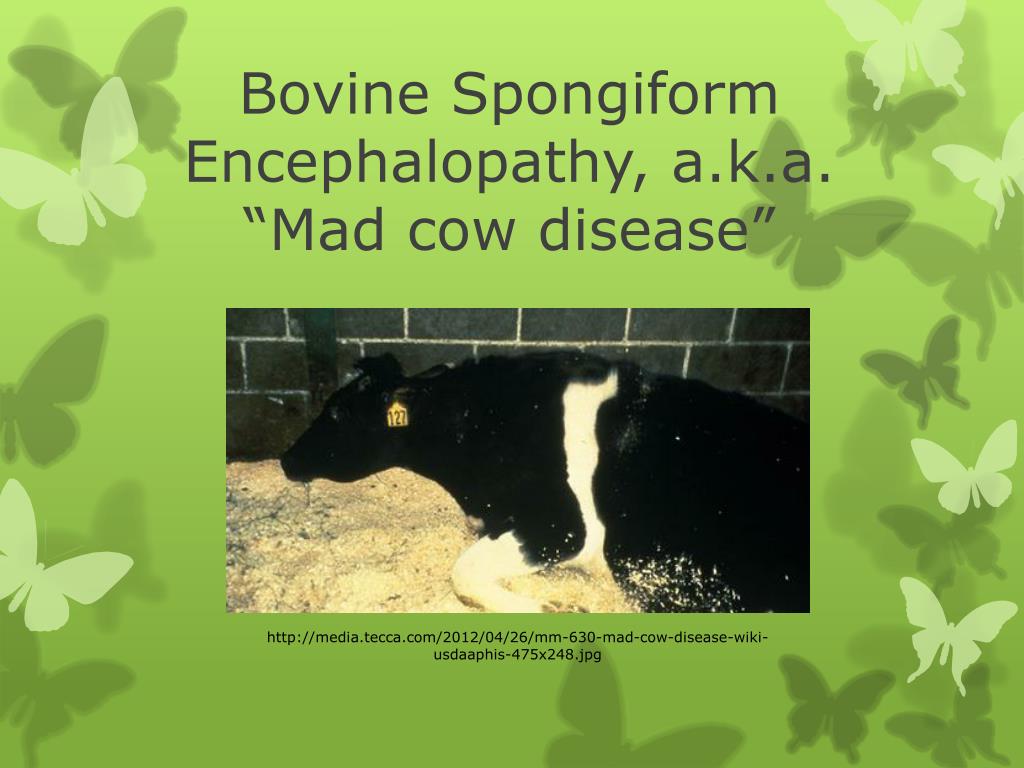
Alzheimer’s disease can be contagious, neurophysiologists find out
9September 2015, 20:08
Wille and his colleagues have taken the first step towards uncovering the causes of “mad cow disease” by spending the last three years deciphering the structure of one of the prion variants, with the help of which they caused spongiform encephalopathy in rodents.
Using thousands of snapshots of molecules extracted from the brains of mice and frozen to near absolute zero, biologists have compiled a three-dimensional “identikit” of the prion, allowing them for the first time to look at how this molecule is arranged and what parts it consists of. This is a very schematic portrait of prions – you cannot see individual atoms on it, but the clarity of the image is enough to understand how its parts are connected to each other and how these connections appeared.
Scientists have figured out how “mad cow disease” enters the brain of animals
September 22, 2015, 16:45
volumes.
